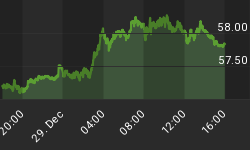There could be some pretty bumpy days in both stock and bond markets in the days between now and early August.
Moody's is following through with their threat to review US credit worthiness. Text of their press release today follows:
"New York, July 13, 2011 -- Moody's Investors Service has placed the Aaa bond rating of the government of the United States on review for possible downgrade given the rising possibility that the statutory debt limit will not be raised on a timely basis, leading to a default on US Treasury debt obligations. On June 2, Moody's had announced that a rating review would be likely in mid July unless there was meaningful progress in negotiations to raise the debt limit.
In conjunction with this action, Moody's has placed on review for possible downgrade the Aaa ratings of financial institutions directly linked to the US government: Fannie Mae, Freddie Mac, the Federal Home Loan Banks, and the Federal Farm Credit Banks. We have also placed on review for possible downgrade securities either guaranteed by, backed by collateral securities issued by, or otherwise directly linked to the US government or the affected financial institutions."
It is important to note that not just Treasuries, but government agency debt, and debts backed by US federal credit (which we presume includes Build America municipal bonds) could be downgraded as well.
Logically, there should be an increase in upward pressure on Treasury interest rates if the credit rating goes down. That should be coming true shortly, unless downward interest rate pressure from the flow of money escaping the credit crisis in Europe counteracts or overwhelms the upward pressure.
The agency debt and municipal debt that may be downgraded consequentially, doesn't have the same level of inbound international money flow as Treasuries. Those asset categories may therefore have a different net rate reaction to a downgrade if it occurs.
Then, of course, in this unpredictable world, investors could shake off a downgrade altogether.
Since the US credit rating has been AAA since 1917, there is not much in the way of U.S. experience with rating downgrades. The credit problems in Europe can't be helpful.
In those accounts that permit holding cash on a temporary basis, we have about 30% cash. We did have somewhat more recently, but re-committed some of that cash to the S&P 500 as that index recovered.
We also moved all money market assets recently to Treasury-only money funds. We did that when we learned that about 1/2 of the paper in money funds were from European banks.
In those accounts that permit, we have a very low to zero bond exposure, as we expect rates to rise, and bond prices to fall -- although that theory has not been proved correct in recent months.
Stock positions are predominantly US, high, quality dividend income stocks with yields above 3%.
In accounts that permit, we have a gold allocation ranging from 5% to 10%.
















